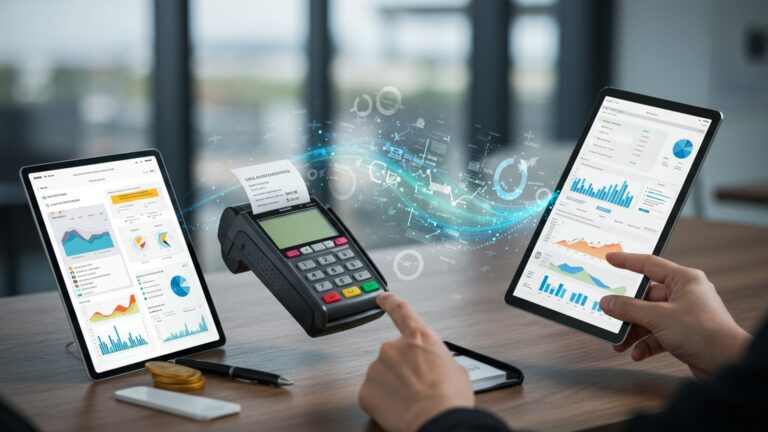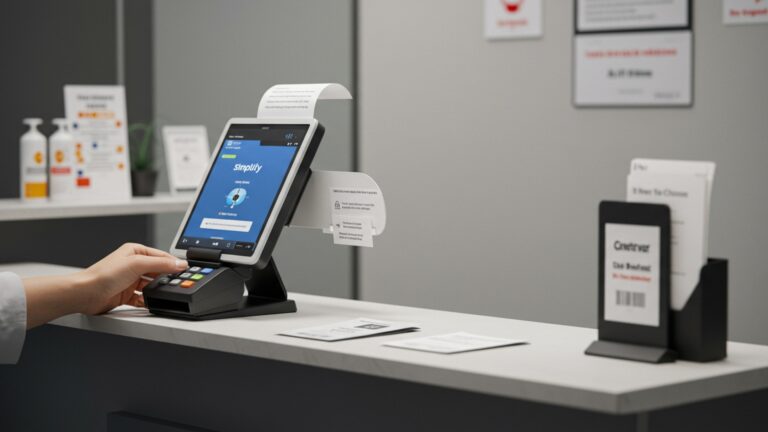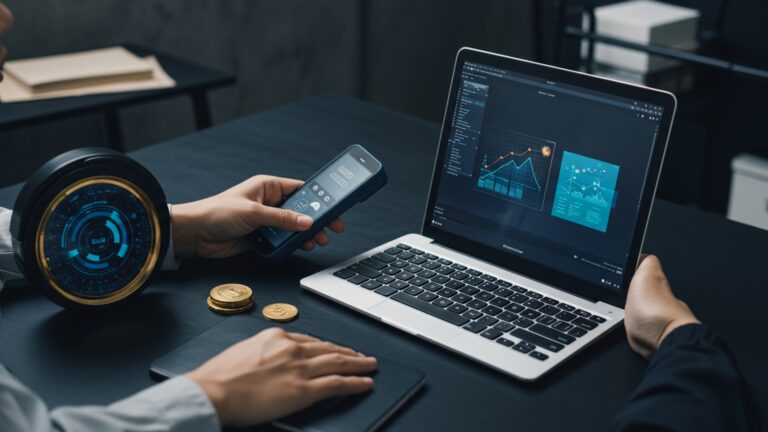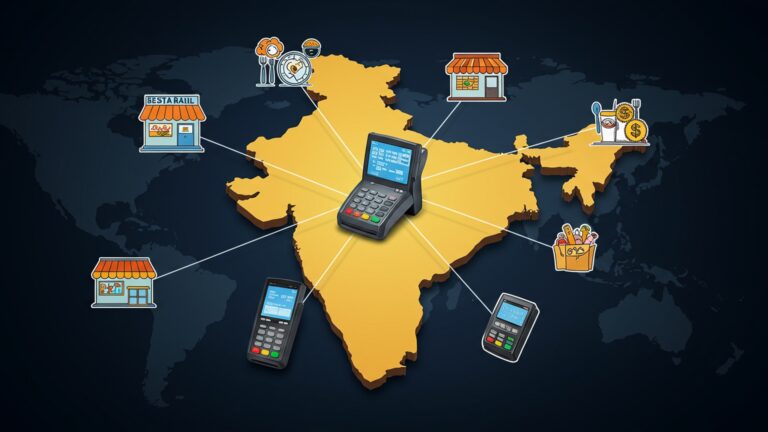How to Choose the Best POS Software for Your Retail Store Success
In today’s dynamic marketplace, selecting the optimal pos software for retail is no longer just about processing transactions; it’s the strategic backbone of a store’s operational efficiency and growth. Modern retailers face intense competition and evolving consumer expectations, demanding systems that integrate inventory management, customer relationship management (CRM). advanced analytics. Recent developments, such as AI-driven insights and robust cloud-based solutions, allow businesses to predict stock needs, personalize customer interactions. facilitate seamless omnichannel experiences, from buy-online-pickup-in-store (BOPIS) to personalized loyalty programs. Choosing wisely empowers stores to reduce costly stockouts, optimize staff workflows. cultivate lasting customer loyalty.
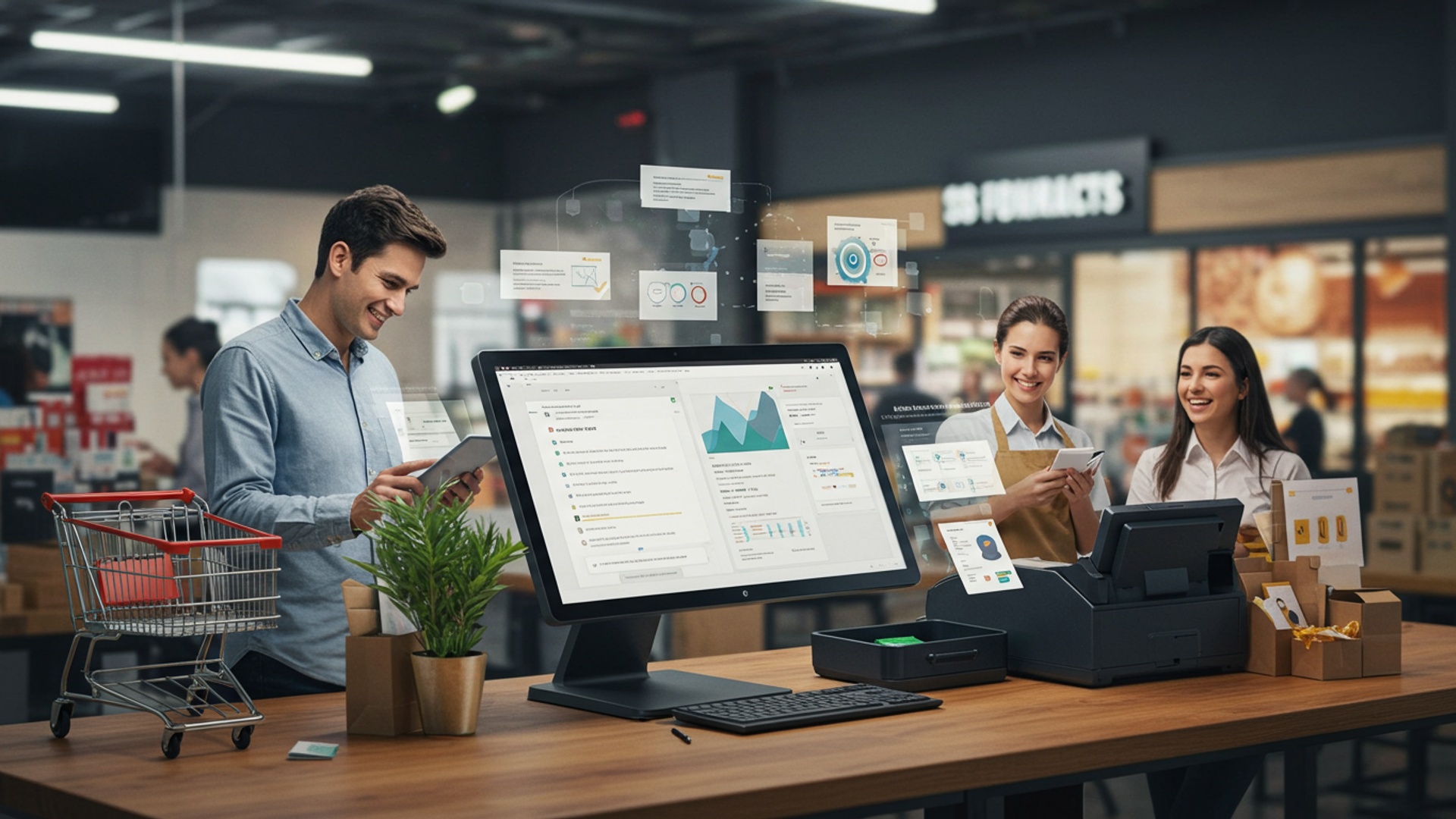
Understanding POS Software: More Than Just a Cash Register
In today’s dynamic retail landscape, the term ‘Point of Sale’ (POS) software has evolved significantly beyond its traditional definition. At its core, a POS system is where your customer makes a payment for products or services. Historically, this meant a simple cash register. But, modern pos software for retail has transformed into a comprehensive ecosystem, acting as the central nervous system for your entire operation.
Think of it as the ultimate retail command center. It processes transactions, yes. it also manages inventory, tracks customer data, analyzes sales trends. even helps with employee scheduling. For a retail store, choosing the right POS software is no longer a luxury; it’s a fundamental necessity for efficiency, growth. customer satisfaction. It bridges the gap between your physical store, online presence. backend operations, providing a holistic view of your business performance.
Core Features Every Retailer Needs in Their POS Software
When evaluating pos software for retail, it’s crucial to look beyond basic transaction processing. A truly effective system offers a robust suite of features designed to streamline operations and enhance the customer experience. Here are the essential components:
- Transaction Processing
- Inventory Management
- Customer Relationship Management (CRM)
- Reporting and Analytics
- Employee Management
- Payment Processing Integration
- Multi-Store Capabilities
This is the foundation. Your POS must handle sales, returns, exchanges, discounts. gift card redemptions smoothly and efficiently. It should support various payment methods, including credit/debit cards, mobile payments. contactless options.
This feature is paramount for retailers. It allows you to track stock levels in real-time, set reorder points, manage product variations (size, color), conduct stocktakes. transfer inventory between locations. Accurate inventory data prevents stockouts and overstocking, directly impacting your bottom line.
A powerful POS integrates CRM capabilities, enabling you to capture customer data, track purchase history, manage loyalty programs. segment customers for targeted marketing efforts. Understanding your customers is key to fostering repeat business.
Data is gold. Your POS should generate detailed reports on sales performance, popular products, employee productivity, peak shopping hours. profit margins. These insights empower informed decision-making and strategic planning.
Many systems include features for tracking employee hours, managing commissions, assigning roles. monitoring individual sales performance. This streamlines payroll and helps identify top performers.
Seamless integration with your chosen payment processor is non-negotiable. This ensures secure transactions, reduces manual errors. often results in faster checkout times.
If you operate multiple retail locations or plan to expand, your POS needs to offer centralized management for inventory, sales. customer data across all stores.
Types of POS Systems: Cloud-Based vs. On-Premise
The architecture of your pos software for retail significantly impacts its functionality, cost. maintenance. The two primary types are cloud-based and on-premise systems.
Cloud-Based POS (SaaS – Software as a Service)
Cloud-based POS systems operate over the internet, with software and data hosted on remote servers managed by the vendor. You access the system via a web browser or an app on a tablet/smartphone. This model is often referred to as SaaS.
- Pros
- Accessibility
- Lower Upfront Costs
- Automatic Updates
- Scalability
- Data Backup
- Cons
- Internet Dependency
- Subscription Fees
- Data Security Concerns
Access your system from anywhere with an internet connection, ideal for managing multiple locations or working remotely.
Typically involves a monthly subscription fee, reducing initial capital expenditure.
Vendors handle software updates and maintenance, ensuring you always have the latest features and security patches.
Easily scale up or down based on your business needs without significant hardware investments.
Data is regularly backed up to secure servers, minimizing the risk of data loss.
Requires a stable internet connection to function optimally. Some offer offline modes but with limited functionality.
Ongoing monthly or annual costs.
Reliance on a third-party vendor for data security, though reputable providers employ robust measures.
On-Premise POS (Legacy Systems)
On-premise POS systems, also known as traditional or legacy systems, involve software installed directly on your own computers and servers within your retail store. You own the software license.
- Pros
- Full Control
- No Internet Dependency
- One-Time Cost (Software)
- Cons
- High Upfront Costs
- Maintenance Responsibility
- Limited Accessibility
- Scalability Challenges
- Data Backup Responsibility
You have complete control over your data and system customization.
Can operate without a constant internet connection, beneficial in areas with unreliable connectivity.
After the initial purchase, there are no recurring software subscription fees, though maintenance and support contracts are common.
Significant initial investment for software licenses, servers. hardware.
You are responsible for all software updates, security patches. hardware maintenance.
Typically tied to your physical location, making remote access more complex.
Scaling requires additional hardware and software investments.
You are solely responsible for ensuring regular and secure data backups.
Here’s a comparison table to summarize:
| Feature | Cloud-Based POS | On-Premise POS |
|---|---|---|
| Data Storage | Remote servers (vendor managed) | Local servers (store managed) |
| Cost Model | Monthly/Annual subscription | Large upfront license fee + maintenance |
| Accessibility | Anywhere with internet | Primarily on-site |
| Maintenance & Updates | Vendor handles automatically | Internal IT team/third-party |
| Scalability | Easy, pay-as-you-grow | Requires hardware/software upgrades |
| Internet Dependency | High (some offline modes) | Low (functions locally) |
| Security Responsibility | Shared with vendor | Primarily store’s responsibility |
Key Considerations When Choosing POS Software for Retail
Selecting the ideal pos software for retail involves a strategic evaluation of several factors unique to your business. Don’t rush this decision; it will impact every aspect of your operations.
- Scalability
- Ease of Use/User Interface (UI)
- Integrations
- E-commerce Platforms
- Accounting Software
- Loyalty Programs
- CRM Systems
- Hardware Compatibility
- Security Features
- Customer Support and Training
- Pricing Models
Your business will hopefully grow. Can the POS system grow with it? Consider if it supports additional registers, new store locations, increased product lines. higher transaction volumes without requiring a complete overhaul. A scalable solution prevents costly migrations down the line.
A complex system can lead to errors, slow down checkout. frustrate employees. Look for intuitive interfaces that minimize training time. Conduct trials with your staff to get their feedback on usability. A well-designed UI significantly impacts operational efficiency.
Your POS shouldn’t be an isolated island. It needs to seamlessly integrate with other critical business tools you use, such as:
For omnichannel retailers, real-time synchronization between your physical store and online shop (e. g. , Shopify, Magento) is vital for consistent inventory and customer data.
Integration with tools like QuickBooks or Xero simplifies bookkeeping, reconciles sales data. reduces manual data entry.
If not built-in, ensure compatibility with third-party loyalty and marketing platforms.
Beyond basic POS CRM, deeper integrations might be needed for advanced customer segmentation and marketing automation.
Determine if the software is compatible with your existing hardware (barcode scanners, receipt printers, cash drawers, tablets) or if you’ll need to purchase new equipment. Cloud-based systems often offer more flexibility, working with off-the-shelf devices.
Protecting sensitive customer and business data is paramount. Ensure the POS solution is PCI DSS compliant, offers encryption for transactions, has robust user authentication. provides regular security updates. Data breaches can be devastating for a retail business.
Even the best software can present challenges. Evaluate the vendor’s support options (24/7, phone, email, chat), response times. the quality of their training resources. A responsive support team is invaluable during setup and ongoing operations.
grasp the total cost of ownership. This includes not just the software subscription or license fee. also transaction processing fees, hardware costs, installation, training. ongoing support. Compare different vendors’ pricing structures carefully.
Tailoring Your POS to Your Retail Niche
The “best” pos software for retail isn’t one-size-fits-all. Different retail niches have unique operational requirements that their POS system must support. Understanding these specific needs will guide your selection process.
- Boutiques & Apparel Stores
- Grocery Stores & Convenience Stores
- Specialty Stores (e. g. , Electronics, Sporting Goods)
- Multi-Location Retailers
- Pop-Up Shops & Mobile Retailers
These businesses often benefit from strong CRM capabilities to build customer loyalty, detailed inventory management for size and color variations. robust reporting on product performance to identify trends. The ability to easily manage returns and exchanges is also crucial. For instance, a boutique owner might prioritize a system that allows staff to quickly look up a customer’s purchase history to recommend complementary items or manage a client book, enhancing the personalized shopping experience.
Speed and efficiency are paramount here. Look for POS solutions with fast barcode scanning, integrated weighing scales, quick key functionality for frequently sold items. robust inventory management for perishable goods with expiry dates. Self-checkout options can also be a significant advantage. A good example is a system that can handle thousands of SKUs and process transactions in seconds, minimizing queue times.
These stores often deal with higher-value items and may require advanced inventory tracking, serial number management. perhaps even repair tracking modules. Detailed product details, warranty management. the ability to process complex payment plans or financing options are also valuable. For an electronics retailer, a POS that tracks specific serial numbers for high-value items can be critical for warranty claims and theft prevention.
For businesses with several branches, a centralized POS system is essential. This allows for unified inventory management across all stores, consolidated reporting, customer profiles accessible from any location. streamlined pricing updates. Imagine a clothing chain where a customer can return an item purchased in one city to a store in another, thanks to a connected POS system.
Flexibility and portability are key. Cloud-based pos software for retail that runs on tablets or smartphones, coupled with mobile card readers, is ideal for these temporary or mobile setups. They need reliable offline functionality in case of intermittent internet access and quick setup/teardown.
Consider a small artisan bakery, for example. Their primary needs might include ingredient tracking (inventory for raw materials), order management for custom cakes. perhaps a simple customer loyalty program. Contrast this with a large hardware store needing robust inventory for thousands of items, supplier management. the ability to handle complex returns of tools or building materials. The ideal POS for each will look vastly different.
The Implementation Journey: From Selection to Go-Live
Once you’ve narrowed down your choices for pos software for retail, the journey isn’t over. A successful implementation requires careful planning and execution. This stage is where your thoughtful selection truly pays off.
- Thorough Vendor Research
- Request Demos and Free Trials
- Negotiate Contracts and comprehend Pricing
- Data Migration
- Staff Training
- Hardware Setup
- Go-Live and Post-Launch Support
Don’t just look at features. Research the vendor’s reputation, customer reviews. financial stability. A vendor that’s been around for a while and has a strong track record offers more security. Look for case studies from businesses similar to yours.
Always insist on a live demonstration tailored to your specific retail needs. Take advantage of any free trial periods to let your team get hands-on experience with the software. This is crucial for evaluating ease of use and identifying potential workflow issues. Prepare a checklist of your “must-have” and “nice-to-have” features and test each one during the demo/trial.
Beyond the sticker price, scrutinize the contract for hidden fees, annual increases, data ownership clauses. cancellation policies. Clarify what’s included in support and updates. Don’t hesitate to negotiate terms.
This is often the most challenging part. You’ll need to transfer existing customer data, product catalogs. inventory levels into the new system. Plan this meticulously. Many vendors offer migration services, or you may need to export data in specific formats (e. g. , CSV) for import. Accurate data migration prevents operational hiccups post-launch.
Your employees are the front-line users. Comprehensive training is essential for smooth adoption. Provide hands-on sessions, create cheat sheets. designate a “POS champion” within your team who can assist others. Ongoing training and refreshers can help staff utilize new features as they roll out.
Install and configure all necessary hardware components – barcode scanners, receipt printers, card readers. terminals. Ensure network connectivity is stable and secure.
Choose a less busy period for your initial launch. Have vendor support readily available during this critical phase. Monitor performance closely, gather feedback from staff. be prepared to address any immediate issues. A phased rollout, perhaps starting with one register or a smaller set of products, can minimize disruption.
An actionable takeaway here is to create a detailed implementation checklist. This should include everything from data points to migrate, staff members to train, hardware to install. specific tests to run before going live. For example, a small boutique owner might create a checklist that includes: “Export all customer emails from old system,” “Verify 50 top-selling products in new inventory,” “Train Sarah on returns process,” and “Test credit card reader with 5 different cards.” This structured approach significantly increases the chances of a successful transition to your new pos software for retail.
Conclusion
Choosing the right POS software isn’t merely a transaction; it’s a strategic investment in your retail store’s future. Don’t just look for a long feature list; instead, evaluate how each system integrates with your unique operational flow, from inventory management to customer relationship building. My personal tip is to always prioritize a trial period. This hands-on experience allows you to truly gauge user-friendliness and identify potential bottlenecks before committing, much like testing a new display layout with real customers. Consider recent trends like mobile POS capabilities and robust analytics. A truly great system won’t just process sales; it will offer actionable insights into customer behavior and stock levels, transforming raw data into growth opportunities. Remember, your POS is the heartbeat of your retail operation, so choose wisely. By making an informed decision, you’re not just buying software; you’re building a foundation for seamless management and sustained success.
More Articles
Simplify Your Transactions How to Choose the Best POS Billing Software
Boost Your Retail Business How to Master POS Software for Seamless Management
How to Implement POS Software for Your Grocery Store to Boost Efficiency
Your Ultimate Guide How to Select the Right POS Software for Small Businesses
How to Choose the Best Cloud Based POS Software for Your Growing Business
FAQs
What are the absolute must-have features I should look for in POS software?
Beyond just processing sales, prioritize robust inventory management, customer relationship management (CRM), detailed reporting and analytics. employee management. These core functions are crucial for daily operations, understanding your business performance. strategic decision-making.
How essential is it for my new POS to play nice with other software I use?
Extremely vital! Seamless integration with your existing e-commerce platform, accounting software (like QuickBooks or Xero). any loyalty programs will save you a ton of time and prevent data errors. It creates a unified view of your business and streamlines workflows.
My store is small now. I plan to grow. Will my POS software grow with me?
Definitely ask about scalability. Look for a system that can handle more transactions, additional inventory, new locations. more staff without needing a complete overhaul. Cloud-based solutions often offer this flexibility more easily, adapting as your business evolves.
Do I really need a mobile POS. what about hardware compatibility?
A mobile POS can be a game-changer for customer service, allowing staff to check inventory, process sales, or even do line-busting anywhere in the store. Also, ensure the software works with the hardware you either already have or plan to purchase, like barcode scanners, receipt printers. payment terminals to avoid unexpected costs.
Besides the monthly fee, what other costs or support considerations should I keep in mind?
Always dig into the total cost of ownership. Beyond monthly subscriptions, ask about setup fees, transaction fees, hardware costs. any charges for updates or premium support. Good customer support (24/7, training resources) is invaluable, so check reviews and ask about their service level agreements.
How can POS reporting actually help my business succeed?
Powerful reporting and analytics are your secret weapon. They can reveal your best-selling products, peak sales times, customer purchase patterns. employee performance. This data helps you make smarter decisions about inventory, staffing, marketing. promotions, directly boosting your success.
What should I look for to ensure my customer and business data are safe?
Data security is non-negotiable. Ensure the POS software is PCI compliant for payment processing, offers strong encryption for all data. has features like user access controls and regular data backups. Cloud-based solutions should also detail their data center security measures to protect sensitive data.

